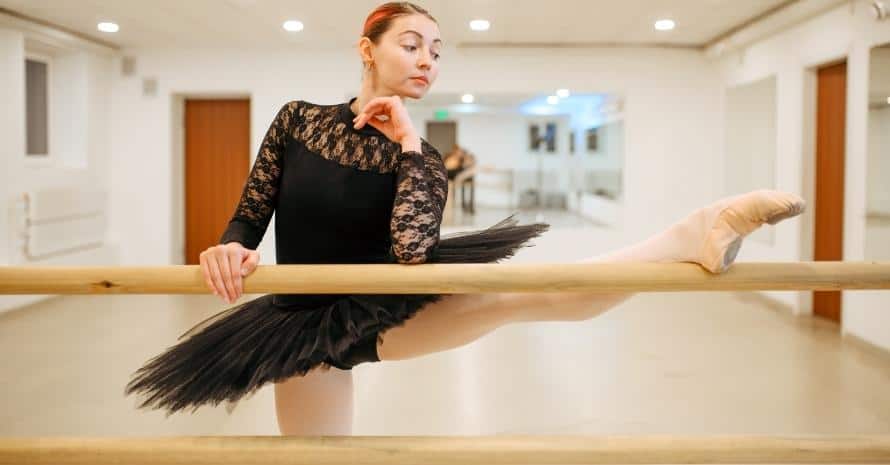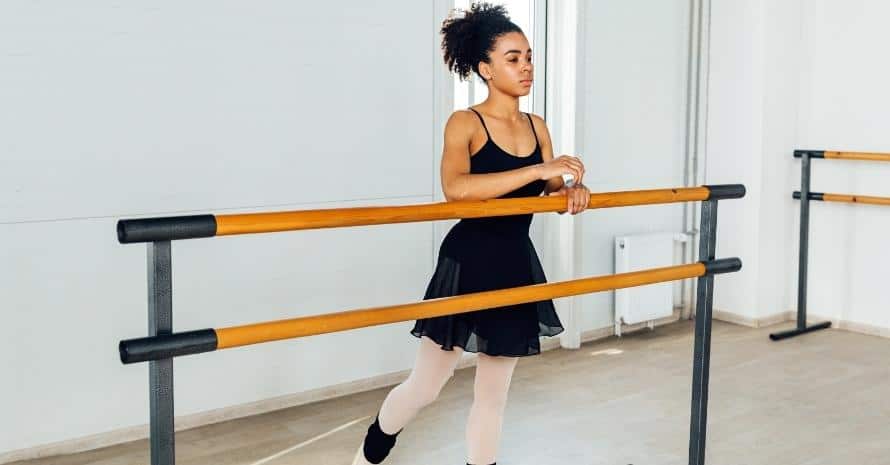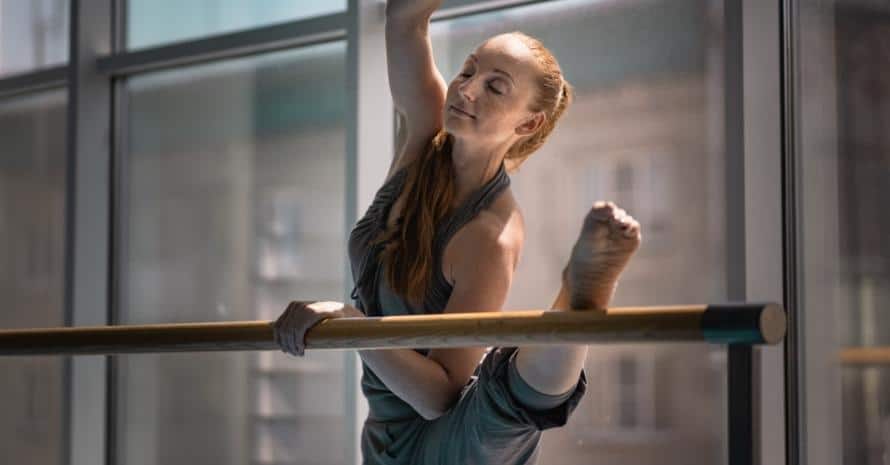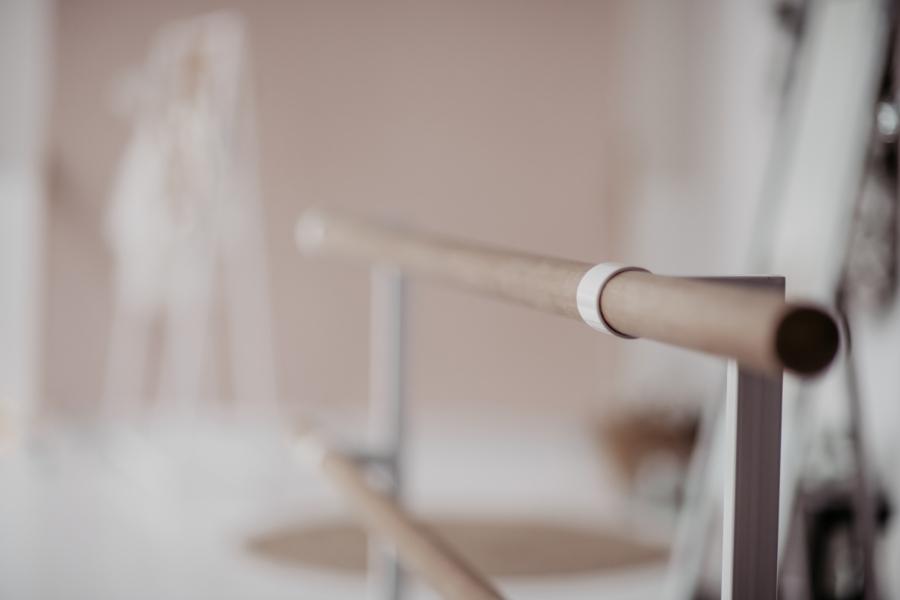If you are new to ballet, you may be wondering how high the ballet barre should be. The height of the barre depends on your height and the type of ballet you are doing.
The ballet barre height for adults should be high enough that you can comfortably hold on to it with both hands while standing on your tiptoes. If you are doing classical ballet, the barre should be about waist height. If you are doing modern or contemporary ballet, the barre can be lower, about hip height.
The height of the barre should be adjusted so that your arms are in a comfortable position when you are holding on to the barre. If your arms are too low, you will strain your shoulders. If your arms are too high, you will not be able to hold on to the barre as securely.
Ballet Barre Height for Personal or Public Use?
Barre height is an important factor in a dancer’s technique and performance. The height of the barre should be set so that the dancer can maintain proper alignment and technique while executing movements. A barre that is too high or too low can cause the dancer to lose balance and stability, and can lead to injury.
When choosing the height of your ballet barre, it is important to take into account your own height and proportions. The barre should be set at a height that allows you to maintain proper technique and alignment, without compromising your range of motion. If you are taller or shorter than average, you may need to adjust the height of the barre accordingly.

The height of the barre should also be considered when performing movements that require you to be in an upright position, such as pliés. A barre that is too high can cause you to arch your back, which can lead to pain and injury. Conversely, a barre that is too low can cause you to round your back, which can also lead to pain and injury.
When setting the height of your ballet barre, it is important to err on the side of caution. If you are unsure of the proper height for your barre, it is always better to err on the side of caution and go with a height that is too low, rather than too high. You can always adjust the height of the barre as needed, but it is better to be safe than sorry.
Height Personal Ballet Barre
If you are looking to add a personal ballet barre to your home, there are a few things you should consider before making your purchase. Ballet barres come in a variety of heights, so it is important to choose the one that is best for you.
The standard height for ballet barre is four feet, but there are also barres that are six feet tall. If you are taller than the average person, you may want to consider a taller barre. You should also take into account the height of your ceilings when choosing a barre. If you have low ceilings, you will want to choose a shorter barre so that it doesn’t hit the ceiling when you are working out.
Height Public Ballet Barr
Most people think of ballet as a very elegant, delicate and precise art form. And while it is all of those things, it is also a very athletic and physically demanding activity. Ballet dancers must be strong and have excellent balance and coordination.
The ballet barre is an essential piece of equipment for ballet dancers. It is used for warm-ups, practicing steps and for strengthening the muscles.
The ballet barre height from floor is important for several reasons. First, the barre must be high enough so that the dancer can comfortably grip it with both hands without having to bend over. Second, the barre should be high enough so that the dancer can execute the steps and movements without having to worry about hitting the floor or the barre itself.

The height of the ballet barre also determines the difficulty of the steps and movements that can be performed. For example, a dancer might be able to execute a certain step or movement with ease if the barre is lower to the ground. But if the barre is raised higher, the same step or movement might prove to be more difficult.
Most ballet studios have adjustable ballet barres so that the height can be adjusted to accommodate different dancers and different levels of ability.
So, the next time you see a ballet dancer gracefully moving across the stage, remember that a lot of hard work and dedication goes into making it look so easy!
What Ballet Barre Should I Buy?
There are many different types and sizes of ballet barres available on the market, so it can be tricky to know which one to buy for adults and ballet barre height for child. Here are a few things to consider when making your purchase:
1. The type of barre you need will depend on what you intend to use it for.
If you are looking for a barre to use at home for personal practice, then a portable or free-standing barre might be a good option. If you are looking for a barre to use in a studio or dance school, then a fixed wall-mounted barre is a better choice.
2. The size of the barre is also important to consider.
If you are taller or have longer arms, then you will need a barre that is longer in length. Conversely, if you are shorter or have shorter arms, then you will need a barre that is shorter in length.
3. The material the barre is made from is another important consideration.
Barres can be made from wood, metal, or plastic. Each material has its own advantages and disadvantages. For example, wood barres are typically more expensive than metal or plastic barres, but they are also more durable.
4. The weight of the barre is also something to consider.
If you plan on moving the barre around often, then a lighter barre might be a better option. However, if you plan on leaving the barre in one spot, then a heavier barre will be more stable.
Once you have considered all of these factors, you should be able to narrow down your choices and find the perfect ballet barre for your needs!
FAQ

What ballet barres are the best?
There is no definitive answer to this question as different dancers prefer different types of ballet barres. Some dancers prefer portable ballet barres that can be moved around and set up anywhere, while others prefer more permanent barres that are bolted or screwed into the floor or walls. Some dancers prefer taller ballet barres while others prefer shorter ones. Ultimately, the best ballet barres are the ones that best suit the needs of the individual dancer.
Why dancer need sturdy ballet barres?
Dancers need sturdy ballet barres so they can have something to hold onto while they are practicing their moves. The barres provide support and stability for the dancers as they go through their routines. Having a sturdy ballet barre will ensure that the dancers are able to maintain their balance and perform their moves correctly.
What is the purpose of barre work?
Barre work is designed to help dancers improve their balance and alignment while performing basic movements. It can also help dancers build strength and stamina while practicing new steps and routines.
Also read:
Conclusion
In general, the higher the ballet barre, the more challenging the ballet moves will be. So if you are a beginner, it is best to start with a lower barre. As you become more experienced, you can gradually move to a higher barre.

